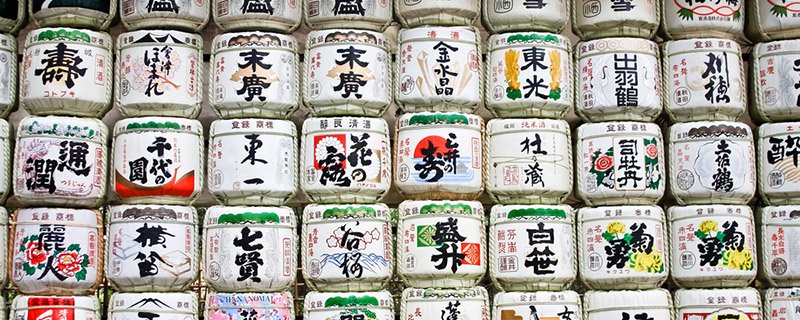Culture

Japan has a multi-faceted culture that has evolved through the centuries, starting from the prehistoric period of thousands of years ago up to the present modern era that has welcomed some outsider influences, such as from its neighboring Asian countries, the Americas, and Europe.
Arts
Composed of a wide array of media and styles, Japanese art is a rich and vibrant aspect of the Japanese culture.
Calligraphy
This is a traditional writing style that features smooth, flowing brush strokes to produce text, such as stories, poems, phrases or just one character. It utilises special types of brushes, inksticks, inkstones and Mulberry paper.
Painting
Painting is one of the oldest and most highly regarded art forms in Japan. Its origins trace back to ancient times, with geometric, botanical, and other designs having been discovered on unearthed stones and graves dating back to the Jomon and Yayoi Periods.
Through the centuries, other painting styles have also flourished, including religious murals and panels, ink paintings, indigenous art, and European-influenced pieces.
Sculpture
The art of Japanese sculpting began in primitive times, when clay was used to make earthenware pottery that was shaped into animals, people, deities and other beings.
When Buddhism was introduced to the country, large statues made of bronze and other metals became common at temples. Examples include Todai-ji Temple’s Nio Guardian and Horyuji’s Kongorikishi Guardian Deity.
Today, contemporary sculpture uses a combination of wood, paper, bamboo and other materials.
Ikebana
Also called “kado”, which means “the way of flowers”, ikebana is the art of Japanese flower arrangement. It is an art form that requires discipline in the creation of a display that exudes a seamless joining of humanity and nature.
With the use of various techniques and the application of minimalism, variously coloured flowers are assembled, with their leaves and stalks carefully placed to produce graceful and natural shapes and lines.
Manga
Manga are Japanese comics that tell stories on a broad array of topics — science fiction, comedy, suspense and thriller, action, romance, horror, and more.
The earliest documentation of the use of the term was towards the end of the 1700s, when a picturebook by Santo Kyoden called “Shiji no yukikai” was published. Since then, more works have been published, targeting both male and female, young and old.
In the last 20 years, manga have gained recognition outside Japan and have been translated into various foreign languages to accommodate their international readers.
Once a manga series establishes a strong fanbase, it may be made into an anime series, such as Naoko Takeuchi’s “Sailor Moon”, Akira Toriyama’s “Dragon Ball”, Masashi Kishimoto’s “Naruto” and Eiichiro Oda’s “One Piece”.
Samurai and Ninja
Samurai were high-ranking warriors in Japan during the Edo Period. They lived in accordance with the bushido (or the way of the warrior), which emphasised respect, ethics, self-discipline and loyalty. Weapons used included samurai swords, yumi (or longbows), pole weapons, cannons, tanegashima (or Japanese matchlocks), staffs, clubs and chains. They also wore a special kind of armour consisting of iron-plates.
Some well-known samurai in Japanese history are Miyamoto Musashi, Oda Nobunaga, Toyotomi Hideyoshi, Takeda Shingen, Date Masamune, Tokugawa Ieyasu and Uesugi Kenshin.
Today, many samurai districts around the country remain and are popular tourist attractions, including those in Usuki and Kakunodate.
Ninja, on the other hand, were covert warriors who specialised in infiltration, espionage, guerilla warfare, assassination and sabotage. They lived during feudal Japan and were primarily trained in effective espionage and disguise techniques, as well as various survival skills. Contrary to the way they are portrayed in popular media, ninja did not wear all-black costumes. Instead, they dressed just like any civilian so as to be able to blend in and not draw attention. Their weapons included star discs, knives, darts, spikes and swords.
Iga and Koga are the two most famous ninja clans in Japanese history, and both are located in Mie Prefecture. Nowadays, there are a variety of ninja-related attractions in the regional villages where people can tour their old but well-preserved ninja houses, watch a demonstration of ninja techniques, and explore museums that feature many kinds of ninja weapons, clothes, and other artifacts.
Some popular ninja in Japanese history are Hattori Hanzo, Kato Danzo, Fuma Kotaro, Momochi Sandayu, Ishikawa Goemon, Mochizuki Chiyome and Fujibayashi Nagato.
Music
Traditional
Traditional Japanese music come in two forms: the gagaku (orchestral court music) and the shomyo (Buddhist chanting), both of which originated during the Nara and Heian periods. They were played using traditional musical instruments, such as the biwa (a type of stringed instrument), taiko (a type of drum), fue (flute) and shamisen (a three-stringed instrument).
Western-Influenced
During the Meiji Restoration, the arrival of Westerners in Japan introduced Western music to the country. Classical music became popular, and it led to the emergence of several symphony bands and orchestras. Jazz also became a hit in the 1930s and many Japanese musicians in this genre, such as Dan, Sadao Watanabe and June, achieved international fame.
Pop Music
Japanese popular music, also referred to as J-pop, is a genre that encompasses mainstream music from the 1960s up to the present, including:
- Disco
- Club
- Rock
- Alternative
- Heavy Metal
- Reggae
- Hip hop
- Anime theme songs
- Electronic game theme songs
Kimono
Kimono is Japan’s distinctive traditional clothing. It literally means “something one wears”. It used to refer to any type of clothing that is worn, but its meaning changed through time, and it now only refers to that specific full-length piece of clothing that is commonly worn on special events and occasions today.
Available in a wide array of colours, sizes and designs, kimono can be worn by men, women and children. They usually come in vibrant colours with flowery designs during the springtime and with autumn patterns during the fall. For winter, kimono made from heavy material and flannel are worn.
When wearing kimono, tabi (ankle-high sock) and geta (wooden sandals) are also worn.
Architecture
Japan has fascinating traditional and contemporary architecture.
Shrines and temples, dating back several centuries, feature unique and intricate designs that are a mixture of both native Japanese creativity and imported influences from China and other Asian countries.
Old houses and buildings showcase wooden posts, lintels, curved roofs, tatami floors, bamboo blinds and rooms with minimalistic interiors divided by thin, sliding walls, containing barely any large furniture.
In the past century, exposure to Western society had a flow-on effect on Japanese architecture. Many newly constructed houses and buildings have adapted Westernised style with the use of bricks, concrete and other materials. Interior spaces have also started to be filled with more furniture, with desks, tables, chairs, and other pieces being incorporated in the designs.
Nowadays, traditional and modern Japanese architecture coexist harmoniously, and it is quite common to see Japanese cities and towns that have areas with high-rises and skyscrapers located next to an old district, complete with cobblestone roads and several-hundred-year-old houses.
Cuisine
Japanese cuisine comprises a diverse selection of foods and drinks, such as the following:
Traditional Dishes
Rice – This is the Japanese staple food. It can be steamed or fried and is frequently consumed with meat, fish and vegetables.
Miso soup – This is made of miso paste and stock, known as dashi. It can be prepared many different ways and can be mixed with other ingredients such as fish, tofu, carrots, mushrooms, potatoes or meat.
Noodles – Considered a good substitute for rice, noodles are a common Japanese food. They come in different types, with soba, udon and ramen being the most popular. They can be eaten plain or with toppings and other ingredients such as egg, vegetables, meat and seafood.
Sushi – This is rice mixed or topped with different ingredients. Some of the most popular varieties are the nigiri-zushi (a block of rice with toppings of vegetables, meat or seafood), maki-zushi (rice and other ingredients are rolled and wrapped in a sheet of seaweed), and chirashi-zushi (sushi rice with fresh vegetables and seafood as toppings).
Tonkatsu – A type of deep-fried dish featuring a crumbed pork cutlet. Its origins date back to the 19th century and it can be served as a standalone, with rice and soup, or as a sandwich filling.
Yakiniku – Translated as “grilled meat”, this Japanese cuisine covers a wide selection that includes grilled pork, beef, chicken, seafood and vegetables.
Sweets – The Japanese have some of the tastiest desserts and sweets. Wagashi, which typically consists of mocha and red bean paste, is a traditional sweet that is frequently served with tea. Other common Japanese sweets are the melonpan (melon bread), anmitsu (agar jelly cubes mixed with red bean paste and fruits), anpan (sweet roll stuffed with red bean paste), chinsuko (biscuits made of flour and lard) and castellan (Japanese sponge cake).
Beverages
Tea – There are many kinds of Japanese tea but the most popular is the Japanese green tea, which is extracted from the Camellia sinensis leaves and served during tea ceremonies. Other types include the genmaicha (green tea with roasted brown rice), hojicha (green tea that is charcoal roasted), matcha (powdered green tea) and mugicha (barley tea).
Shochu – Made from rice, buckwheat, sweet potato or barley, shochu is a distilled spirit that originated in Kyushu. It may contain between 25% to 35% alcohol by volume, which is more than sake and wine but lower than vodka and whiskey.
Sake – Produced by an intensive rice fermentation process, sake is widely available in Japan and is commonly consumed with almost all types of Japanese and international cuisines.
Beer – Japan is home to several large breweries and microbreweries, so the popularity of beer in the country remains at a high point. Lager beers with low levels of alcohol are the most commonly consumed and are often partnered with a variety of Japanese dishes.
Festivals
Most Japanese festivals are religiously influenced, particularly by Shintoism and Buddhism. Throughout the country, almost every single shrine has its own annual festivities to honor deities and spirits.
Examples of well-known religious festivals in Japan are the Kanda Matsuri, held in Tokyo every May and highlighted by a procession of several mikoshi (or portable shrines) around central Tokyo, and the Tenjin Matsuri, held in Osaka every July and featuring a grand procession through the streets and the river.
Furthermore, there are also events that celebrate other aspects of Japan such as its seasons and historical events, like the Sapporo Snow Festival every February, which is probably the most popular winter event in the country. It consists of exhibitions of spectacular ice and snow statues around the city.












